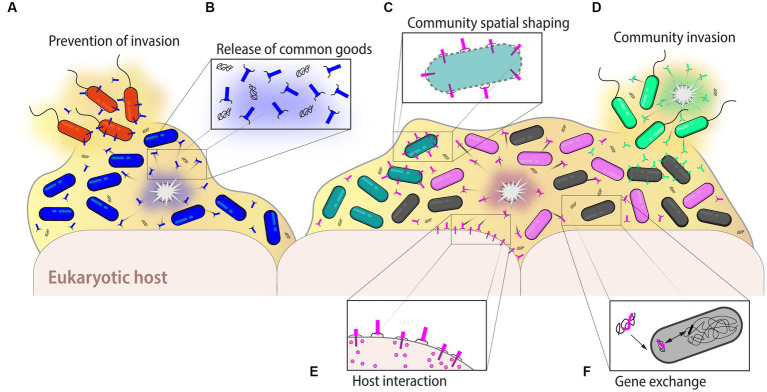Figure 6.
Ecological and evolutionary roles of eCISs. Extracellular CISs can have many different roles impacting bacterial communities. (A) In monoclonal as well as polyclonal bacterial populations, eCISs may ward off potential invaders, notably against phylogenetically related bacteria to exclude competitors that target the same niche and nutritional environment. (B) Lysis of the eCIS-producing cells releases not only the particles themselves, but also nutrients and DNA, which become a common good accessible to the entire community. The stochastic release of eCISs also permits to maintain the population in a preconditioned state of alert, preventing the invasion by other strains. (C) Furthermore, in multi-species bacterial populations, eCISs help to shape the community for example by maintaining the spatialization of different strains within the environment. (D) Conversely, eCISs may also help in the colonization of a new niche by displacing established strains. (E) In host-associated strains, eCISs could help mediate the interaction between the bacterial population and the host, depicted here with the interaction between eCISs and eukaryotic cells shown below the bacterial biofilm. (F) Finally, the eDNA available following the lysis of a producing strain may benefit bacterial evolution through horizontal gene transfer permitting for instance the exchange of different eCIS genes, creating new particles with different activities or activity spectra. Examples and further details are given in the text.

